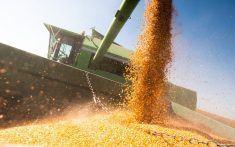Glacier FarmMedia – Ahead of the February supply and demand estimates from the United States Department of Agriculture, the department’s attaché in Buenos Aires issued their grain and feed update on Argentina.
The attaché pegged Argentina’s 2023/24 wheat harvest at 15.40 million tonnes. While thanks to El Nino rains it was a significant improvement over the drought-stricken crop of 12 million tonnes the year before, it was well short of the 22.15 million harvested in 2021/22.
Wheat exports also dramatically improved, going from 3.66 million tonnes in 2022/23 to now 10.20 million, according to the Buenos Aires desk. But again, short of the 16 million tonnes in 2021/22. Meanwhile, 2023/24 ending stocks dropped to 1.62 million tonnes from the 3.32 million the previous year. Those for 2021/22 were 1.93 million tonnes.
Read Also

Calling for bigger crops ahead of StatCan report
Statistics Canada will release its first survey-based production estimates for the 2025/26 crop year on Dec. 4, with general expectations for upward revisions to most major crops from the model-based estimates in September. However, as StatCan has shown a tendency to underestimate production in its December reports, many analysts expect actual production may be revised upward in subsequent reports.
The USDA attaché placed Argentina’s 2023/24 corn production at 57 million tonnes, up sharply from the 35 million the previous year due to the El Nino. This year’s output also exceeded the 52 million in 2021/22.
The country’s corn exports tallied 41 million tonnes in 2023/24 compared to the 23.40 million in 2022/23, but short of the 38.85 million in 2021/22.
The attaché forecast corn ending stocks for 2023/24 at 2.62 million tonnes, from the previous year’s 1.41 million, but still lower than the 4.30 million in 2021/22.
Going into the USDA’s World Agricultural Supply and Demand Estimates on Feb. 8, the average trade guess for Argentina’s corn crop came in at 55.59 million tonnes, up 590,000 from the department’s January report. However, there has been some consternation within the markets that the recent hot spell in Argentina might have eroded potential corn yields with the crop being in a critical stage of its development.
— Glen Hallick reports for MarketsFarm from Winnipeg.















